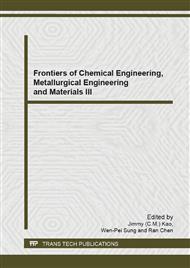p.433
p.438
p.442
p.446
p.450
p.454
p.457
p.461
p.465
XFEM for Crack Propagation in Fiber-Reinforced Materials
Abstract:
This article describes the basic format of extended finite element method (XFEM), and simulation the crack propagation of fiber reinforced materials with extended finite element. Explore the number and elastic modulus of fibers influence the crack propagation by changing the elastic modulus and quantity of the fibers in matrix.
Info:
Periodical:
Pages:
450-453
Citation:
Online since:
August 2014
Authors:
Keywords:
Price:
Сopyright:
© 2014 Trans Tech Publications Ltd. All Rights Reserved
Share:
Citation:


